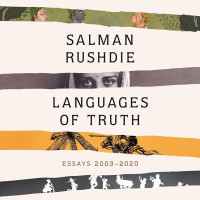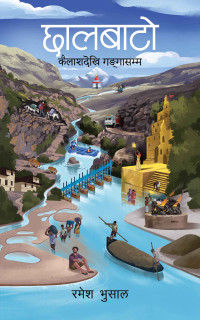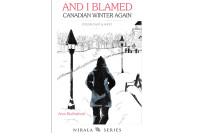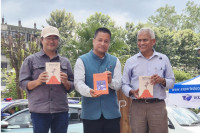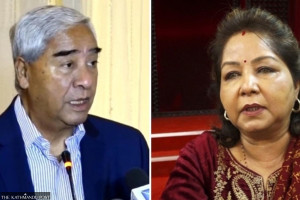Books
Reading helps me breathe life into characters
Bijay Baral, a seasoned actor in Nepali cinema, shares how literature is a big influence in his acting journey.
Manushree Mahat
Bijay Baral’s reading journey is intertwined with his acting career. With active involvement in theatre productions and Nepali cinema, he initially sought books to improve his artistic skills. While it began as a professional ambition, his reading has evolved beyond a dedication to his craft; now, he reads simply because he has a genuine love for stories.
He has starred in a number of successful Nepali films, including the ‘Kabaddi’ franchise, ‘Jaari’, and, most recently, ‘Dimag Kharab’. He is also the executive director of Mandala Theatre and has starred in a number of their productions. Although his Wikipedia page labels him as a ‘poet’, Baral firmly rejects the title. While he takes pleasure in poetry and often recites it, he prefers not to refer to himself as a poet.
In this interview with the Post’s Manushree Mahat, he talks about his reading journey, the prospect of book-to-film adaptations in Nepali cinema and the impacts of reading on faithful portrayals of character in cinema.
When did your reading journey begin, and how has it evolved over the years?
During most of my childhood and subsequent years, I focused on reading course books and academic materials, as I aspired to become a doctor. It wasn’t until 2009 that I ventured beyond my comfort zone. Unaware that reading was essential for actors, I initiated my journey with books on acting, entertainment, and biographies of Bollywood and Hollywood actors. To immerse myself in reading and cultivate the habit, I explored stories like Akbar and Birbal, as well as comic books. Even now, I find joy in reading folk tales and short stories, and have a particular fondness for poems—concise and expressive, they hold the power to convey much in a few words.
You talked about how you didn’t realise that actors had to read as well. How much do you usually read to grasp the essence of a character, and give justice to each of your roles?
My reading approach varies based on the personality and characteristics of each role. Consider a character portrayed as an intellectual who deeply values reading; this trait is fundamental to their identity. To authentically portray such a character, I delve into the literature that the character would likely read. This includes understanding the vocabulary, knowledge and perspective of a dedicated reader, which significantly differs from those who do not share this trait. Character development is pivotal in storytelling, and an actor can genuinely capture the essence of a character only by aligning with their motivations and thoughts.
Do you do this with each of your roles? How much does the character’s backstory influence your reading?
Yes, we have a thorough process where we develop backstories for each of the characters we play. And whether or not I need to read for the roles depends on them.
You imagine a life for the characters you play: who they are as a person, in which part of the life they’re in, what they have studied, what kind of environment they grew up in, are all the questions that we fill in for the roles we play. So, if I’m playing a character who comes from an environment that would not have allowed them to read, I wouldn't necessarily read to fit into that role.
You have to understand the personality and psychology of the characters you play. Characters that read are more prevalent in theatres than in cinemas, so I’ve had to read more for some of the characters I’ve played in theatre plays.
Movies adapted from books are uncommon in Nepali cinemas, but there’s potential for growth. As Nepali literature becomes more diverse, cinemas could benefit by bringing various stories to the screen. What, in your opinion, is the potential for Nepali cinemas if we adapt our books into films?
I think there is a lot of potential. Theatres have adapted a lot of Nepali novels and stories, like those by Kumar Nagarkoti—‘Palpasa Cafe’, ‘Ular’, and most recently ‘Damini Bhir’. There were even talks in the industry about adapting Nayan Raj Pandey’s book into a movie. If we adapt books into films, there’s a very big chance that the film will be successful, but the process of translating a book into a sound film is difficult.
The dramaturgical process, screenwriting, dialogue writing and screenplay are all crucial steps that need to be handled with the utmost understanding and adequacy to bring a book into cinema. If we can make good use of that script, then we can make some good films. But the thing is that the canvas is too vast when it comes to cinemas.
Why do you think this is so difficult?
Crafting a story, narrating it, and representing it on screen are distinct tasks. Writing dialogues and developing characters are part of this process. Screenwriters must maintain the authenticity of the novel while creating a screenplay. As actors, we can draw inspiration from the characters, but writers face a more extensive challenge. Industry professionals are making efforts, and with luck, we may see more films adapted from books in the future.
Are there any books you wish were adapted into films?
I wish I could portray characters from Nayan Raj Pandey’s writings. His stories revolve around the Madhesi community, reflecting the experiences in Tarai. These narratives resonate with my own experiences, and I feel confident in bringing these characters to life.
Do you think the Madhesi community is adequately represented in literature and cinemas?
Not at all. Presently, portrayals of the Madhesi community tend to be stereotypical and fail to capture the authentic Madhesi experience. When Madhesi characters appear in films, it seems as if the directors based their portrayal on a brief observation without delving into the nuanced reality of the community. While books often authentically depict Madhesi characters, there is still a considerable distance to cover in cinema.
Bijay Baral’s book recommendations
Palpasa Cafe
Author: Narayan Wagle
Publisher: Nepalaya
Year: 2005
This book, set during the Maoist insurgency, helps us grasp the shifting political and social dynamics of Nepal at that time.
Tumhari Auqat Kya Hai
Author: Piyush Mishra
Publisher: Rajkamal Prakashan
Year: 2023
‘Tumhari Auqat Kya Hai’ gives us a closer look at the person Piyush Mishra is. It offers insights into his identity as an actor, singer and writer.
Nepali Lok Katha
Author: Tulasi Diwas
Publisher: Nepal Pragya Pratisthan
Year: 1974/1975
In ‘Nepali Lok Katha’, you can explore various stories that encompass different castes, backgrounds and regions of our country.
Chuli
Author: Sarubhakta
Publisher: FinePrint
Year: 2012
A very interesting book about the struggles and bravado it takes to scale mountains. It details the experience of climbing Mount Everest in a very accessible way.
Kumari Prashnaharu
Author: Durga Karki
Publisher: Nepa-laya
Year: 2020
‘Kumari Prashnaharu’ is a beautiful collection of short stories that helped me understand the experiences and struggles of women.




 19.02°C Kathmandu
19.02°C Kathmandu
